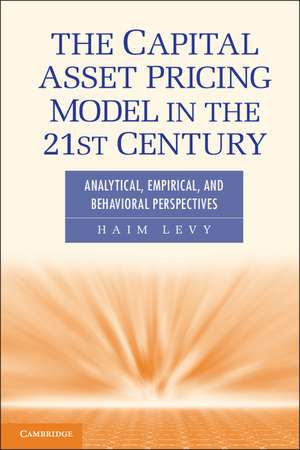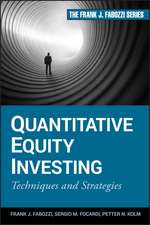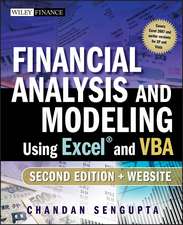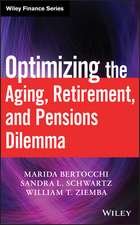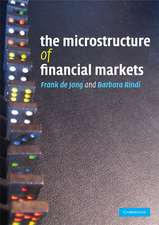The Capital Asset Pricing Model in the 21st Century: Analytical, Empirical, and Behavioral Perspectives
Autor Haim Levyen Limba Engleză Paperback – 29 oct 2011
| Toate formatele și edițiile | Preț | Express |
|---|---|---|
| Paperback (1) | 355.88 lei 6-8 săpt. | |
| Cambridge University Press – 29 oct 2011 | 355.88 lei 6-8 săpt. | |
| Hardback (1) | 987.70 lei 6-8 săpt. | |
| Cambridge University Press – 30 oct 2011 | 987.70 lei 6-8 săpt. |
Preț: 355.88 lei
Nou
Puncte Express: 534
Preț estimativ în valută:
62.98€ • 73.86$ • 55.22£
62.98€ • 73.86$ • 55.22£
Carte tipărită la comandă
Livrare economică 27 ianuarie-10 februarie 26
Preluare comenzi: 021 569.72.76
Specificații
ISBN-13: 9780521186513
ISBN-10: 052118651X
Pagini: 456
Ilustrații: 63 b/w illus. 32 tables
Dimensiuni: 152 x 229 x 23 mm
Greutate: 0.61 kg
Editura: Cambridge University Press
Colecția Cambridge University Press
Locul publicării:New York, United States
ISBN-10: 052118651X
Pagini: 456
Ilustrații: 63 b/w illus. 32 tables
Dimensiuni: 152 x 229 x 23 mm
Greutate: 0.61 kg
Editura: Cambridge University Press
Colecția Cambridge University Press
Locul publicării:New York, United States
Cuprins
1. Overview; 2. Expected utility theory; 3. Expected utility and investment decision rules; 4. The mean-variance rule; 5. The capital asset pricing model (CAPM); 6. Extensions of the CAPM; 7. The CAPM cannot be rejected: empirical and experimental evidence; 8. Theoretical and empirical criticisms of the M-V rule; 9. Prospect theory and expected utility; 10. Cumulative decision weights: no dominance violation; 11. M-V rule, the CAPM, and the cumulative prospect theory: coexistence.
Recenzii
'Currently, trillions of dollars are managed with the aid of quantitative techniques. Major paradigms of quantitative finance include expected utility theory, mean-variance optimization, the closely-related capital asset pricing model, prospect theory, and (Professor Levy's own creation) stochastic dominance. In this book, Professor Levy presents a penetrating analysis of the relationships among these paradigms, often finding mutual support where others find only conflict.' Harry Markowitz, Nobel Laureate, University of California, San Diego
'Levy's book should be required reading for anyone who wants to learn about asset pricing; it is also an essential reference for anyone who wants to contribute to the immense literature in the field, the most important subject in the entire field of finance.' Richard Roll, University of California, Los Angeles
'Here in one volume is a presentation, analysis, and discussion of some of the key pillars of modern financial theory: mean-variance analysis, the capital asset pricing model, expected utility theory, and cumulative prospect theory. Haim Levy presents each theory carefully and completely, discusses the relevant arguments and evidence, and argues convincingly that practitioners and academics should adopt a synthesis that incorporates major elements of these approaches. A real tour de force from one of the major contributors to the field.' William F. Sharpe, Nobel Laureate, Stanford University
'Levy's book should be required reading for anyone who wants to learn about asset pricing; it is also an essential reference for anyone who wants to contribute to the immense literature in the field, the most important subject in the entire field of finance.' Richard Roll, University of California, Los Angeles
'Here in one volume is a presentation, analysis, and discussion of some of the key pillars of modern financial theory: mean-variance analysis, the capital asset pricing model, expected utility theory, and cumulative prospect theory. Haim Levy presents each theory carefully and completely, discusses the relevant arguments and evidence, and argues convincingly that practitioners and academics should adopt a synthesis that incorporates major elements of these approaches. A real tour de force from one of the major contributors to the field.' William F. Sharpe, Nobel Laureate, Stanford University
Notă biografică
Descriere
This book bridges behavioral economics and the classical models in finance to show that there is no contradiction between them.
